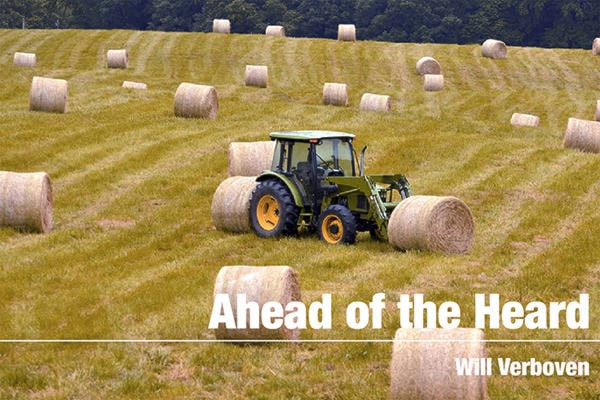By Will Verboven Ahead of the Heard
Alberta citizens have heard that tiresome mantra about how the province needs to diversify the economy to reduce our dependence on the energy industry. Governments invariably trot out the idea whenever oil prices collapse. Not surprisingly, their enthusiasm for economic diversification tends to wane as the price of oil increases. Interestingly, despite government fickleness about supporting diversification, the Alberta economy today is a lot more diversified than it has ever been in the past. In the same light, our energy economy has also become a lot larger. It’s always amusing that whenever a recession occurs in Alberta the government of the day suddenly comes to the realization that agriculture and its connected sectors in food processing and exporting is the second largest industry in the province. As it turns out, governments rarely have any ideas themselves as to how to expand agriculture except by finding new markets for production. Curiously, they seem to be very adept at discouraging ag production by increasing taxes (hello carbon levy and head tax) and regulations (environmental and labour) to name just a few.
After suddenly discovering the economic significance of the ag sector, the usual next step is for the government or one of its agencies to hold public consultation meetings on how the ag sector can be expanded to diversify the Alberta economy. If this sounds vaguely familiar it is - similar such events under the guise of roundtables, economic forums and other such buzzwords were held in both the Lougheed days and the Klein era with the creation of the much-vaunted Alberta Advantage vision. To be fair, some good did evolve from those discussions – our billion-dollar feedlot industry can be traced back in part to incentives the Lougheed regime put into place. But most of the recommendations coming out of those past ag diversification crusades were generalities with the usual idle promises to encourage technology and marketing. I expect the present consultations will follow the same trail - intransigent ag department senior planning bureaucracy will see to that. It could be different if only government would get up the courage to go back to the future and re-discover a new vision.
The quickest way to increase agriculture production in Alberta would be to provide additional means for ag entrepreneurs to do the job. It’s been done before and it can be done again. The agriculture industry in this province was established by releasing public lands to farming and ranching. Much of the arable and pastoral land has been taken up and now forms the basis of our multi-billion-dollar ag industry, but millions of acres of public land remain undeveloped and under tight government control. Such lands can be found in central and northern Alberta, particularly north of the Peace River area. It’s true that over the past 50 years land has been developed for agriculture production in areas around High Level and Fort Vermilion but there is still more that could be developed, and not just in the north – there is also land potential in some of the irrigation districts in the south and in the special areas.
Government naysayers like to discount such development possibilities by pronouncing that those areas are marginal at best and not commercially viable. Interestingly, such attitudes were quite common 120 years ago about Alberta in general. Remember how agriculture was declared impossible in the Palliser Triangle and the Peace River district around Grande Prairie? Those areas now generate hundreds of millions if not billions in ag production. No, the remaining undeveloped areas may not generate production on the same scale because some of these areas are marginal, particularly in the north, but they could produce significant cereal and oilseed crops thanks to modern agronomic practices that did not exist even 50 years ago. Clearly, even modest expansion in irrigated land in the south could see economic results into the millions from production and processing.
What it will take is a government that is willing to step out of its’ lackadaisical comfort zone and renew the vision of agricultural land development. Some of that vision existed as recently as 10 years ago when the government of the day released 800 quarters for land clearing and development in north central areas. A recent report by the University of Alberta stated that even more production could be achieved in that area thanks to the positive consequences of global warming. As many are realizing, climate change is actually good for Alberta and agricultural production. More next time.
willverboven@hotmail.com
